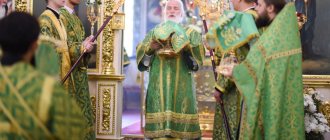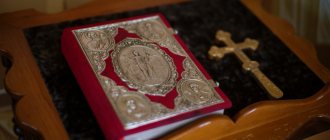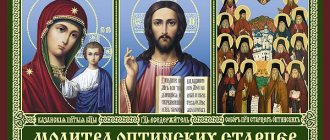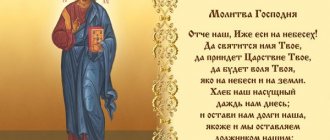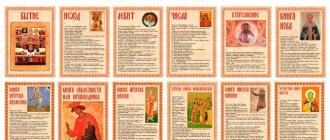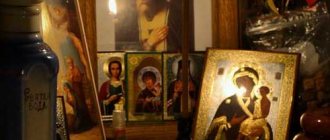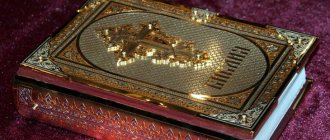Gospel of Matthew. Chapter 1
To main
All authors
Home → Bible → Gospel of Matthew
1 Genealogy of Jesus Christ, Son of David, Son of Abraham.[1] OK. 3:23.
2 Abraham begat Isaac; Isaac gave birth to Jacob; Jacob begat Judah and his brothers;[2] Gen. 21:2; 25:26; 29:35. 3 Judah begat Perez and Zerah by Tamar; Perez begat Hezrom; Hezrom begat Aram;[3] Gen. 38:30; 46:12. Ruth. 4:18. 1 Par. 2:5. 4 Aram begot Abinadab; Amminadab begat Nahshon; Nahshon begat Salmon; 5 Salmon begat Boaz by Rahab; Boaz fathered Obed by Ruth; Obed begat Jesse;[5] Ruth. 4:21. 1 Par. 2:11. 6 Jesse begat David king; David the king begot Solomon from Uriah's daughter;[6] 1 Sam. 17:12. 2 Sam. 12:24. 7 Solomon begat Rehoboam; Rehoboam gave birth to Abijah; Abijah begat Asa;[7] 1 Kings. 11:43; 14:31; 15:8. 1 Par. 3:10. 8 Asa begat Jehoshaphat; Jehoshaphat begat Joram; Jehoram begat Uzziah; 9 Uzziah begat Jotham; Jotham begat Ahaz; Ahaz begat Hezekiah; 10 Hezekiah begat Manasseh; Manasseh begat Amon; Amon gave birth to Josiah;[10] 2 Kings. 20:21. 1 Par. 3:13. 11 Josiah begat Joachim; Joachim gave birth to Jehoiachin and his brothers before moving to Babylon.[11] 2 Kings 23:34; 24:6. 1 Par. 3:16. 2 Par. 36:4.
12 After he was removed to Babylon, Jeconiah begat Shealtiel; Shealtiel begat Zerubbabel;[12] 1 Chron. 3:17. 2 Par. 36:8. 1Ride 3:2; 5:2. 13 Zerubbabel begat Abihu; Abihu begat Eliakim; Eliakim begat Azor; 14 Azor begat Zadok; Zadok gave birth to Achim; Achim begat Eliud; 15 Eliud begat Eleazar; Eleazar begat Matthan; Matthan gave birth to Jacob; 16 Jacob begat Joseph, the husband of Mary, from whom was born Jesus, who is called Christ.
17 So all the generations from Abraham to David are fourteen generations; and from David to the deportation to Babylon, fourteen generations; and from the migration to Babylon to Christ there are fourteen generations.
18 The birth of Jesus Christ was like this: after the betrothal of His Mother Mary to Joseph, before they were united, it turned out that She was pregnant with the Holy Spirit.[18] OK. 1:27.
19 But Joseph, Her husband, being righteous and not wanting to make Her public, wanted to secretly let Her go.
20 But when he thought this, behold, an angel of the Lord appeared to him in a dream and said: Joseph, son of David! Do not be afraid to accept Mary your wife, for what is born in Her is from the Holy Spirit; 21 She will give birth to a Son, and you will call His name Jesus, for He will save His people from their sins.[21] OK. 1:31. Acts 4:12. 1John 2:2. Rome. 3:24.
22 And all this happened, so that what was spoken by the Lord through the prophet might be fulfilled, saying: 23 Behold, a virgin is with child and will give birth to a Son, and they will call His name Immanuel, which means: God is with us.[23] Is. 7:14.
24 Rising from sleep, Joseph did as the angel of the Lord commanded him, and took his wife, 25 and without knowing her, at last she gave birth to her firstborn Son, and he called his name Jesus.[25] OK. 2:21.
Next page →
Gospel of Matthew
2 pages → Pages:
1
Total 29 pages
© “Online-Read.RF”, 2017-2022 Feedback
The Gospel of Matthew was written in Aramaic, but has come down to us in a Greek translation.
The original Gospel of Matthew has not survived. Most likely, the text was written between 41–55 years. A number of researchers name another period: 70–80 years. In any case, this text is older than the other two canonical Gospels:
- From Luke;
- From John.
But most textual scholars believe that the earliest Gospel is the Gospel of Mark. And yet, it is the Gospel of Matthew that, according to tradition, is the first book of the New Testament.
The Apostle Matthew is usually depicted with the Gospel and an angel
The Gospel of Matthew is written based on two texts: the Gospel of Mark and Source Q
The Gospel of Matthew is not the memoirs of a single author, but a collage of several primary sources. This is the conclusion reached by researchers who have carefully studied the text of the first book of the New Testament.
If we compare it with other Christian manuscripts, it is easy to see that the author of the Gospel of Matthew used at least two sources:
- Gospel of Mark;
- Source Q.
But don’t rush to open the Bible and look for the unfamiliar Gospel Q.
This text is not there, just as it is not in the hands of archaeologists. This is a hypothetical manuscript, the fact of its existence is calculated in the same way as astronomers detect the presence of invisible celestial bodies - due to indirect signs, such as gravity.
Graphic display of the contribution of the Gospel of Mark and source Q to the texts of Matthew and Luke
But first things first.
The Gospel of Matthew is the most independent Gospel. Only 20% of the information in it is unique to this text.
But at the same time, it is almost half filled with material from the Gospel of Mark. Also, the Gospel of Luke also reproduces 40% of the information from the Gospel of Mark. Further research allows us to draw the following conclusions:
- The texts of "Matthew" and "Luke" are written on materials from the earlier Gospel of Mark;
- 20% and 35% in “Matthew” and “Luke”, respectively, are unique, the authors are unlikely to have read each other;
- A third of the texts of “Matthew” and “Luke” coincide, which means that there is another source that has not survived to this day. It was called Source Q.
Q's source is the early Gospel. Perhaps this is the same, original text of Matthew or one of the other apostles. And yet, the first book of the New Testament makes it possible to touch upon this seemingly lost information.
The Apostle Matthew is called the author of two more apocrypha, but he did not write them
Apocryphal writings are also attributed to the Apostle Matthew.
Gospel of Pseudo-Matthew
This is a late text. Possibly 6th century. It has not been previously reported. He inherits the tradition of the so-called proto-gospels - stories about the childhood of Jesus Christ. It is clear that the author of the apocrypha is familiar with this kind of literature, since he borrows a lot from other proto-gospels and develops the topic more deeply.
In the Gospel of Pseudo-Matthew, Jesus Christ is worshiped by dragons and leopards
The text tells about the period of pregnancy of the Virgin Mary and the early years of the Savior. Moreover, the concentration of miracles there is outrageously strong. Jesus Christ is worshiped by leopards, He preaches to dragons and sends the palm tree to heaven.
In spirit, this is not the Gospel at all, for in canonical texts the task is to convey the teachings of Christ. Here is to amaze the reader with the volume of fiction.
The Gospel of Pseudo-Matthew tells about the childhood of Jesus Christ
Gospel of Matthew the Sincere
Most likely a remake. At least, ancient sources do not report this text. It is impossible to determine for sure whether the authorship is attributed to the Apostle Matthew, but most likely this is the case.
The Apocrypha tells the story of the last years of Jesus' life and His Resurrection. Moreover, it contains incorrectly interpreted quotations from the canonical Gospels.
Here is a fragment of the first chapter:
Gospel of Matthew the Sincere 1:1–6
“He came to testify to the light, but not to bring glory to those who believed in him. He was not the light, but was sent to testify to the light. He was the One whose word became flesh. Imperishable flesh, not knowing death. There were those who, having filled themselves and those around them with doubt, said: We do not believe that this is from the holy spirit, for he suffers from our sufferings and rejoices in our joys. It is only said in the scriptures: Holy is not the one who, having renounced himself from the world, lives without sin, but the one who watches over himself among men and edifies others.”
It is clear that we are talking about Jesus Christ.
"He was that the word Was flesh."
This is confirmed by the following phrase:
Gospel of Matthew the Sincere 2:1
“When I found Confidence in Power, I came to the desert to John.”
But the first fragment is simply a paraphrased introduction from the Gospel of John:
John 1:7–8
“He came as a witness, to testify of the Light, so that through him all might believe. He was not light, but was sent to testify to the Light."
Matthew, as an evangelist, is depicted on the sails of the temple.
However, the author of the canonical Gospel is talking about John the Baptist, and in the Gospel of Matthew the Sincere we see thoughtless copying of phrases and a completely un-Christian statement:
"Jesus was not the light."
This is already enough to draw correct conclusions about the value of this apocrypha for Orthodoxy.
There are no reliable reasons to consider the apostle Matthew as the author
Traditionally, the authorship of the Gospel of Matthew is attributed to Matthew. The Bible tells us a little about this man:
Mf. 9:9
“As Jesus passed from there, he saw a man named Matthew sitting at the toll booth, and he said to him, “Follow Me.” And he arose and followed Him.”
Mf. 10:2–4
“And the names of the twelve apostles are these: first Simon, called Peter, and Andrew his brother, James Zebedee and John his brother, 3 Philip and Bartholomew, Thomas and Matthew the publican, James Alphaeus and Levbeus, called Thaddeus, 4 Simon the Canaanite and Judas Iscariot, who betrayed Him.”
This same apostle is also called:
- Levi Matthew;
- Levi Alfeev.
He is mentioned in the Gospel of Luke:
OK. 5:27-29
“After this [Jesus] went out and saw a tax collector named Levi sitting at the tax collection office, and he said to him, “Follow me.” And he, leaving everything, stood up and followed Him. And Levi made a great feast for Him in his house; and there were many publicans and others who sat with them.”
So Matthew was a tax collector and became one of the twelve disciples, the apostles. We also know that Jacob Alfeev may be his brother. This is all that Scripture says about this man.
Where did the claim that he wrote the first Gospel come from? From Tradition.
Papyrus with the text of the Gospel of Matthew
We must admit that Tradition is not always a reliable source. Consider the stories that all the heroes of the New Testament are sisters, brothers and parents to each other.
Tradition tends to simplify everything, and in the couple of centuries since the crucifixion of Jesus Christ, much has become conjectured. Therefore, you cannot trust legend 100%.
Irenaeus of Lyon
one of the first Church Fathers, Bishop of Lyon
Only in the 2nd century, Church Father Irenaeus of Lyons mentioned the written work of the Apostle Matthew:
“Matthew published the scriptures of the Gospel among the Jews in their own language, while Peter and Paul preached the gospel in Rome and founded the Church.”
In the 4th century, this idea was repeated by the church historian Eusebius of Caesarea:
“Matthew originally preached to the Jews; Having gathered to other nations, he handed them his Gospel, written in their native language. Recalled from them, he left them his Scripture in return.”
He also cites a quote allegedly belonging to Papias of Hierapolis, a contemporary of the last apostles. Actually, all the statements of Papias of Hierapolis are known only from later sources by other authors. Here's the quote:
“Matthew wrote down Jesus’ conversations in Hebrew and translated them as best he could.”
All this is not enough to equate the canonical first Gospel with the text that the Apostle Matthew could have written. And there are good reasons for this. But we'll talk about them in another section.
Here it is important for us that the grounds for establishing authorship are quite shaky, and today we call this book the Gospel of Matthew only by tradition.
As for the apostle himself, according to legend, he preached either in Ethiopia or in Anatolia, for which he was killed around the year 60.
Apostle Matthew should not be confused with Apostle Matthew, who was chosen to replace Judas Iscariot. These are different people.
See also the article The Gospel of Judas
